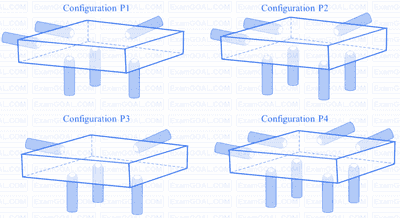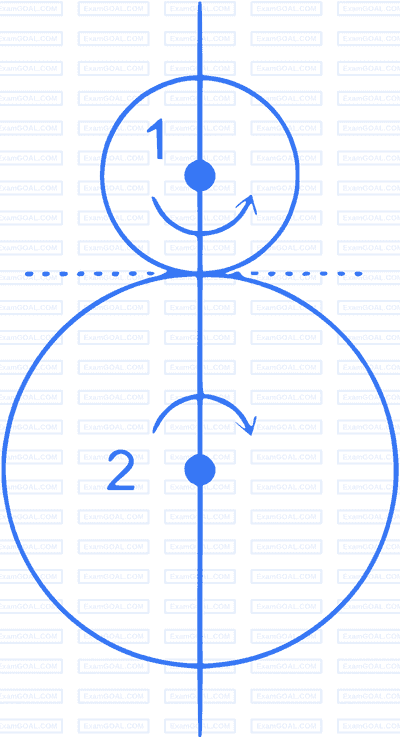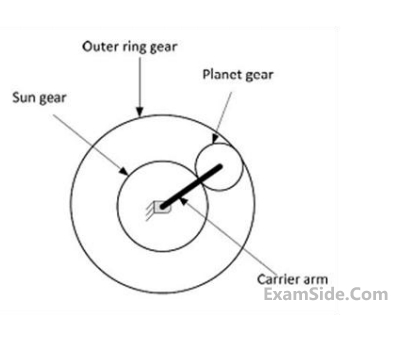Gears and Gear Trains · Theory of Machines · GATE ME
Marks 1
A cuboidal part has to be accurately positioned first, arresting six degrees of freedom and then clamped in a fixture, to be used for machining. Locating pins in the form of cylinders with hemi-spherical tips are to be placed on the fixture for positioning. Four different configurations of locating pins are proposed as shown. Which one of the options given is correct?

Two meshing spur gears 1 and 2 with diametral pitch of 8 teeth per mm and an angular velocity ratio |ω2 |/|ω1 | = 1/4, have their centers 30 mm apart. The number of teeth on the driver (gear 1) is _______ .
(Answer in integer)


Gear $$I:$$ Pitch circle diameter in the plane of rotation 80mm and helix angle 30o
Gear $$II:$$ Pitch circle diameter in the plane of rotation 120mm and helix angle 22.5o
If the input speed is 1440 rpm. The output speed in rpm is
Marks 2
The Levi type-A train illustrated in the figure has gears with module $m = 8 \text{ mm/tooth}$. Gears 2 and 3 have 19 and 24 teeth respectively. Gear 2 is fixed and internal gear 4 rotates at 20 rev/min counter-clockwise. The magnitude of angular velocity of the arm is _________ rev/min. (rounded off to 2 decimal places)

A schematic of an epicyclic gear train is shown in the figure. The sun (gear 1) and planet (gear 2) are external, and the ring gear (gear 3) is internal. Gear 1, gear 3 and arm OP are pivoted to the ground at O. Gear 2 is carried on the arm OP via the pivot joint at P, and is in mesh with the other two gears. Gear 2 has 20 teeth and gear 3 has 80 teeth. If gear 1 is kept fixed at 0 rpm and gear 3 rotates at 900 rpm counter clockwise (ccw), the magnitude of angular velocity of arm OP is __________rpm (in integer).








The arm 4 attached to the output shaft will rotate at


For $${{\omega _1} = 60}$$ rpm clockwise $$(CW)$$ when looked from the left, what is the angular velocity of the carrier and its direction so that Gear $$4$$ rotates in counter clockwise $$(CCW)$$ direction at twice the angular velocity of Gear $$1$$ when looked from the left?

What is the relation between the angular velocities of Gear $$1$$ and Gear $$4$$?
Column $$I$$
$$P.$$ Addendum
$$Q.$$ Instantaneous center of velocity
$$R.$$ Section modulus
$$S.$$ Prince circle
Column $$II$$
$$1.$$ Cam
$$2.$$ Beam
$$3.$$ Linkage
$$4.$$ Gear
The centre distance in the second stage is
Z2 and Z4 are

(a) Worm gears
(b) Cross helical gears
(c) Bevel gears
(d) Spur gears
List $$II$$ (Applications)
1. Parallel shafts
2. Non-parallel, intersecting shafts
3. Non-parallel, non intersecting shafts
4. Large speed ratios

Marks 5

